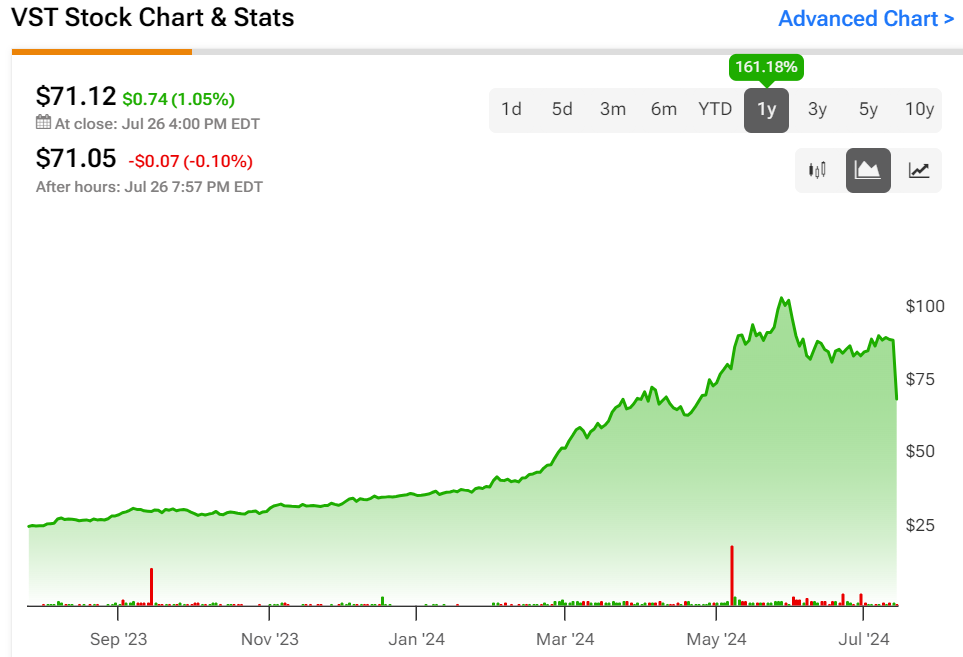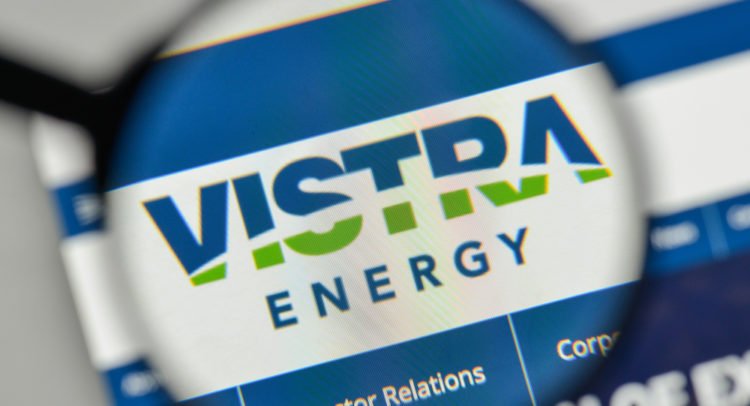Vistra (VST) has become an investors’ favorite “hidden AI” stock after the company completed its acquisition of Ohio-based nuclear fleet operator Energy Harbor on March 1. The stock surged over 161% in the past 12 months, and there’s still a realistic upside to it.
With synergies from the Energy Harbor acquisition, Vistra is set to remain one of the largest independent power producers and retail electricity providers in the U.S. The company has a diverse portfolio of nuclear, solar, coal, and natural gas assets, along with battery energy storage facilities.
I am bullish on Vistra because of its diverse portfolio of assets, particularly nuclear, its capital allocation prowess, and the fact that the company has yet to capitalize on favorable power demand trends from artificial intelligence and data centers.

Vistra’s Capital Allocation Prowess
Vistra has shown brilliant capital allocation skills in the past. In 2017, when renewables started taking over the scene in the highly competitive Electric Reliability Council of Texas (ERCOT) market, Vistra shut down several of its unprofitable coal plants. These plants faced challenges due to an oversupply of renewables and low wholesale power prices.
I’m confident in management’s capital allocation skills to drive future growth by shutting down unprofitable projects, as the abovementioned example, and deploying excess cash flow into capital returns. Since June 30, 2018, Vistra has repurchased over $5 billion in shares. Also, until Q1 2024, Vistra returned $4.6 billion to investors, of which $3.9 billion was through share repurchases, all done under its upsized capital return program of $7.75 billion.
Throughout 2024 and 2025, management plans to repurchase $2.25 billion worth of its shares, which it views as “an attractive investment.” The company’s balance sheet remains strong, with assets of $9.4 billion and liabilities of $8.7 billion. Consequently, I don’t see any reason for the company not meeting its buyback target.
Talking about Vistra’s capital allocation skills would be incomplete without mentioning its strategic entrance into the nuclear power market with its $3.43-billion purchase of Energy Harbor, the operator of the second-largest nuclear fleet in the U.S. The company acquired three nuclear sites (two in Ohio and one in Pennsylvania). With this acquisition, Vistra has added 4,000 megawatts of nuclear generation capacity and one million customers to its retail electricity business.
The Opportunity that Can Send Vistra Soaring
Nuclear has emerged as a strong avenue for 24/7 low-carbon power and hyperscaler companies, including Amazon (AMZN) and Microsoft (MSFT), are signing deals with nuclear power providers to buy electricity for their data centers. One of the top drivers of power demand in data centers is generative artificial intelligence, the power-hungry technology behind large language models like ChatGPT.
According to Goldman Sachs Research (GS) estimates, a ChatGPT query consumes 2.9 watt-hours of electricity, about ten times than the electricity a Google search consumes (0.3 watt-hours). AI is expected to increase data center power demand by 160% by 2030. Right now, data centers account for around 1%-2% of global power consumption and this number is expected to go up to 3%-4% by the end of 2030.
With the rise of generative AI applications like ChatGPT, power demand is expected to surge. Goldman Sachs Research projects an increase in AI-driven power consumption of roughly 200 terawatt-hours annually between 2023 and 2030.
What does all of this mean for a company based in Texas, a state that is a hub for data centers? I expect Vistra to secure long-term power purchase agreements with big-tech companies for data center power, similar to those between Amazon and Talen Energy (TLN) and Microsoft and Helion Energy.
Earlier in July, Chief Executive Officer Jim Burke appeared in an exclusive interview on CNBC Television, commenting on “large customers” who are coming to Vistra and saying they need power for large-scale data centers. While there hasn’t been an official announcement about a project win yet, I believe it’s not too far.
What Does the Sell Side Have to Say?
Vistra stock sports a consensus Strong Buy rating based on six unanimous Buy recommendations. The average price target of $108 implies an upside of 52.10% from current levels. As attractive as that is, the Street-high price forecast points to an upside of 66% from current levels.

The Bottom Line
I believe Vistra’s shares are attractively priced. it trades at 14.8 times this year’s earnings estimates, an 11.5% discount to the sector. The company’s diverse portfolio of natural gas and nuclear assets positions it ideally to capitalize on long-term power demand trends from broader electrification and data centers. If Vistra secures projects from major hyperscalers, its stock can go to the moon.
















